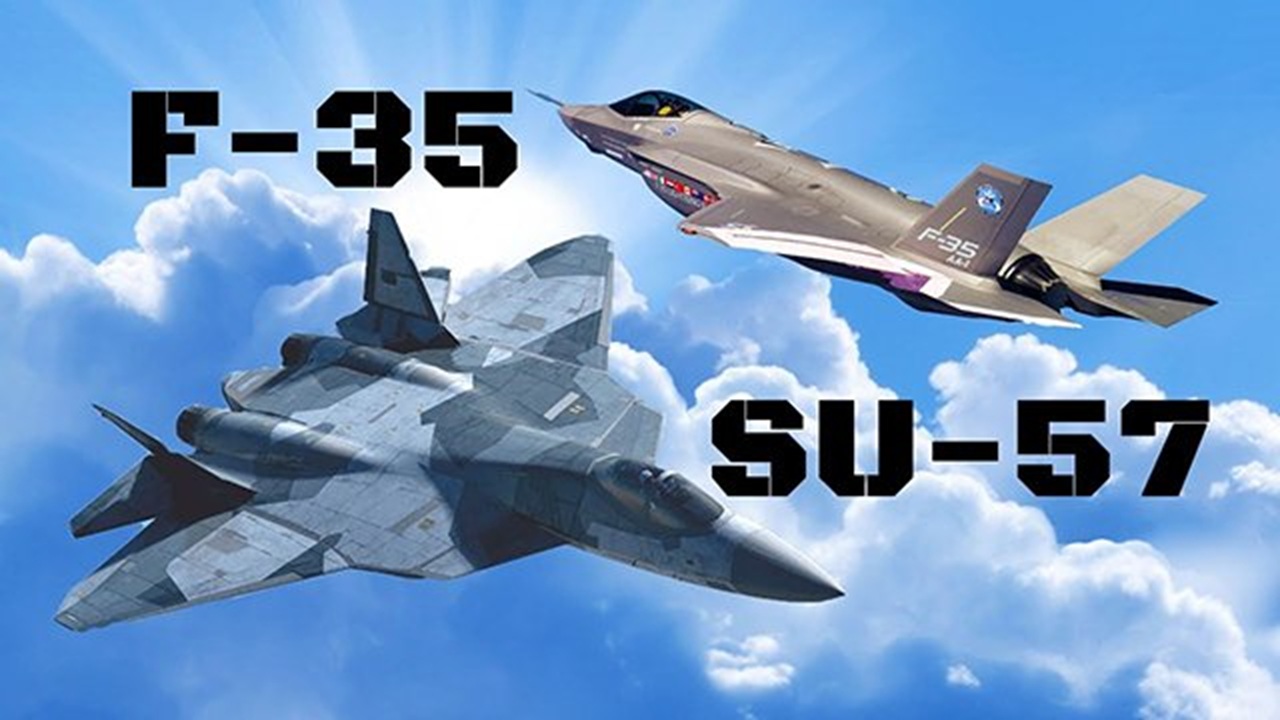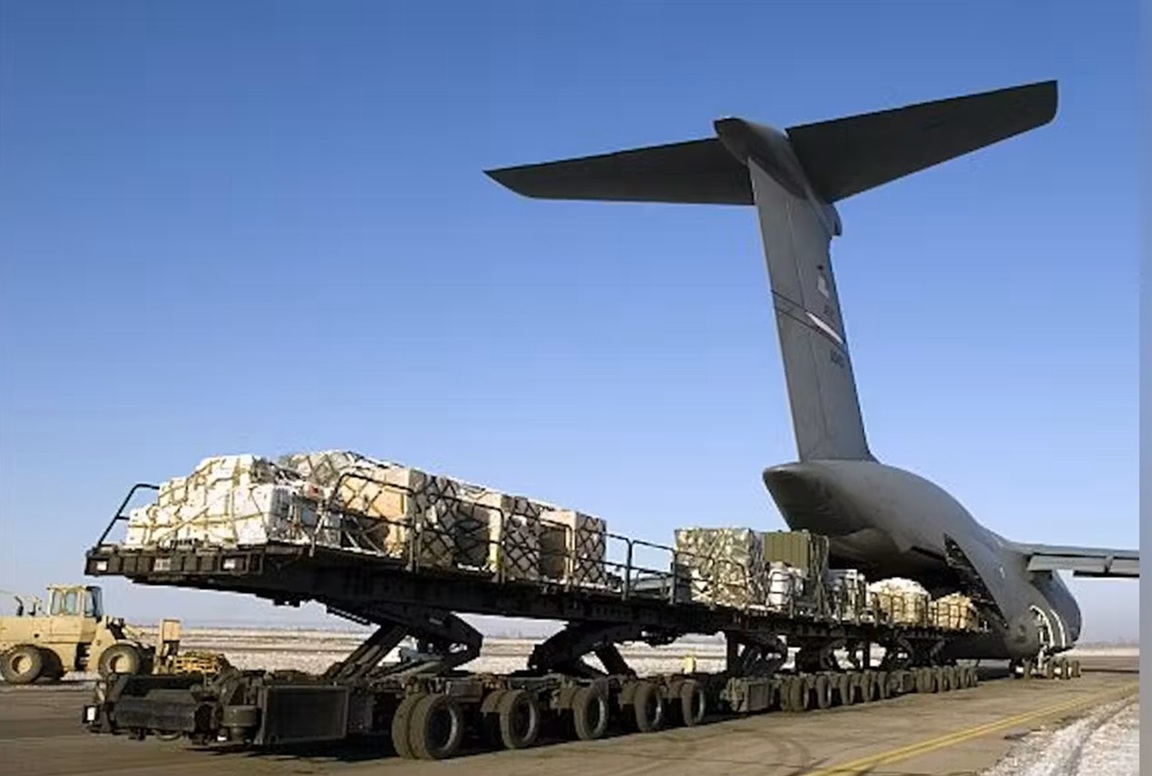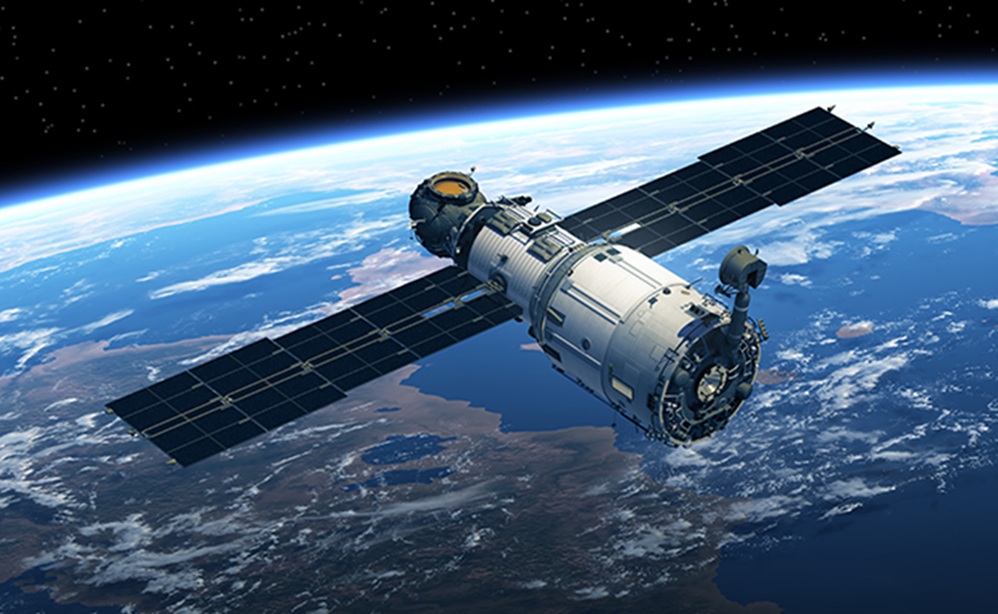India is developing the Advanced Medium Combat Aircraft (AMCA), a fifth-generation stealth fighter. This ambitious project aims to manufacture a multi-role, twin-engine aircraft with advanced stealth capabilities. Since it may take another ten years for induction into the Indian Air Force, the Government of India is exploring an alternative platform to meet immediate requirements. The available stealth platforms are SU-57 and F-35.
Introduction
Both Lockheed Martin F-35 Lightning II and the Sukhoi Su-57 Felon are fifth-generation stealth fighters, but they differ significantly in design philosophy, capabilities and operational roles. Both options are available for India to choose. A detailed comparison is done here, focusing on key technical and operational aspects.
Stealth
F-35 has a superior stealth with an RCS estimated at 0.0015–0.005 m. It uses advanced radar-absorbent materials, internal weapons bays and a smooth, blended air-frame to minimise detection across all aspects. Its stealth is optimised for super-high-frequency radars, giving it a first-strike advantage in beyond-visual-range (BVR) combat. Whereas Su-57 with a stealth radar cross-section (RCS) estimated at 0.1–0.5 m², significantly larger than the F-35’s. Its design includes exposed rivets, visible engine compressors, and less optimised rear-aspect stealth, making it more detectable, especially from certain angles. Stealth is prioritised in the frontal hemisphere, aligning with its defensive role.
Speed and Manoeuvrability
F-35 has a max speed of 1,931 km/h with a combat range of 2400 km. It is designed for subsonic cruising with limited super-manoeuvrability, relying on stealth and BVR combat rather than dog-fighting. It has a single engine of Pratt & Whitney that offers good fuel efficiency but less thrust than twin-engine designs. Su-57 has a Maximum speed of 2,600 km/h with a combat range of nearly 5000 km (with fuel drop tank). Its twin NPO Saturn AL-41F1 engines have thrust-vectoring for super-manoeuvrability, enabling complex aerial manoeuvres and supersonic cruising without afterburners. This makes it better suited for air superiority and combat.
Design and Role
F-35 is a multi-role stealth fighter designed for air-to-ground strikes, air superiority, electronic warfare, and intelligence, surveillance, and reconnaissance (ISR). It emphasises stealth, sensor fusion, and network-centric warfare, making it a versatile platform for penetrating contested airspace and coordinating with allied forces. The F-35 comes in three variants: F-35A (conventional takeoff/landing), F-35B (short takeoff/vertical landing), and F-35C (carrier-based). It’s built for offensive operations, prioritising stealth and precision strikes. Su-57 is also designed as a multi-role stealth fighter focused on air superiority, short-range airstrikes, and defensive interception. It’s designed to operate within Russia’s air defence network, countering enemy stealth fighters and halting ground offensives. The Su-57 emphasises speed, manoeuvrability, and agility over all-aspect stealth.
Weapons
F-35 carries a variety of air-to-air (AIM-120 AMRAAM, AIM-9X Sidewinder) and air-to-ground munitions (JDAM, JSOW) in internal bays to maintain stealth, with external hard-points for additional payload. It has a smaller weapons capacity compared to the Su-57 but benefits from advanced and accurate munitions of NATO. Su-57 can carry up to 7.4 tonnes of weapons, including air-to-air (R-77, R-37M), air-to-ground, and anti-ship missiles, as well as hyper-sonic missiles. Its internal bays and external hard-points allow a diverse and heavy weapon load, giving it an edge in offensive firepower, for long-range engagements.
Avionics and Sensor Suits
F-35 Features advanced sensor fusion with a 360-degree Distributed Aperture System (DAS), AN/APG-81 AESA radar, and integrated avionics that create a comprehensive battlefield picture. Its helmet-mounted display system (HMDS) provides real-time targeting and situational awareness, making it a force multiplier in networked warfare. The F-35’s systems are designed for interoperability with NATO and allied forces. Su-57 is equipped with advanced avionics, including six radars spread across the airframe for enhanced situational awareness backed up with a powerful onboard computer. Its radar system is less integrated than the F-35’s, and its FLIR search-and-track system may increase RCS when active. The Su-57’s avionics are less proven in combat compared to the F-35. Sourcing of advanced components is done from European nations, and it may face problems due to ongoing sanctions.
Combat Experience and Reliability
F-35 is proven in combat, notably by the Israeli Air Force since 2018, with operations in Syria and against Houthi missiles. Its widespread use across multiple nations like the US, UK, Israel and Japan. It demonstrates reliability and combat effectiveness, though it has faced criticism for technical issues and high costs. Emergency landing of F-35 in Thiruvananthapuram airfield and delayed recovery indicate the difficulty in maintaining and recovering this platform. Su-57 has a very limited combat experience and has never been exported. Its operational reliability is less proven due to low production numbers and developmental delays. That means India is taking a huge risk of operationalising this platform post production or purchase like MiG-29 K (Naval Version).
Cost of Production
F-35 is very expensive since the unit cost ranges from $80–$110 million, with high operational costs (~$44,000 per flight hour) and a lifetime program cost exceeding $1.5 trillion. Over 1,000 units are in service globally, with plans for over 2,400 by 2044, ensuring a robust supply chain and interoperability. However, high costs and maintenance demands are significant drawbacks. Whereas Su-57 has an estimated unit cost of $35–$40 million, with lower operational costs. Production is limited, with fewer than 40 units built (including prototypes) so far by Russia. Sanctions and Russia’s focus on the Ukraine conflict have constrained production, limiting its production. Besides, Russia is finding it difficult to source the funds for scaling the project.
Critical Analysis
Though F-35 has superior stealth, sensor fusion, and global operational experience makes it a safer bet for nations prioritising advanced technology and NATO interoperability. Its weaknesses include high costs, limited dog-fighting ability, and dependence on complex maintenance infrastructure. Su-57 has a greater speed, manoeuvrability, and lower costs, making it attractive for air superiority and cost-conscious buyers. Its weaknesses include inferior stealth, limited production, and unproven combat performance.
After the advent of VHF radars, which utilise longer wavelengths to enhance radar cross-section of stealth platforms, these radars have become a disruptor to the airborne stealth technology. India has developed and deployed a Very High Frequency (VHF) radar system, named “Surya,” specifically designed to detect and track stealth aircraft. Similar radars are a part of air defence systems across the world. That means billions of dollars spent on developing the stealth technology by the world have gone down the drain.
As per the strategic considerations, F-35 may offer cutting-edge technology at high costs with limited technology transfer, but may come with potential geopolitical restrictions. The onboard systems align with the western systems but may not integrate well with India’s existing Russian-origin fleet. Su-57 could be affordable for India with the potential for full technology transfer and local production at HAL’s Nasik facility. The aircraft may integrate better with existing Russian systems but carries risks of geopolitical isolation of Russia and the Su-57’s unproven combat record.
The political consistency shown by Russia in maintaining a relationship with India weighs more than the unpredictability displayed by the US government and Mr Donald Trump. This geopolitical phenomenon could also influence the decision-making.
Propaganda Concerns
Russian sources, like Sputnik News, often exaggerate the Su-57’s capabilities while downplaying the F-35’s strengths, as seen in posts on X. Conversely, Western sources may overstate the F-35’s advantages. Both sides engage in promotional bias, so claims should be scrutinised. The power corridors in New Delhi have a tough choice moving forward.
Conclusion
Su-57 excels in speed, manoeuvrability, and cost-effectiveness, better-suited for air superiority and defensive roles. The F-35 is superior in stealth, sensor integration, and combat-proven reliability, making it ideal for offensive operations and networked warfare. For a country like India, the choice depends on strategic priorities. F-35 offers advanced technology but with high costs and geopolitical constraints, while the Su-57 provides affordability and integration with existing systems but lacks the proven track record of F-35. Geopolitical factors and technology transfer can influence the decision-making process at the Ministry of Defence. Delay in taking decisions would be detrimental to India since China has around 200 J-20 stealth fighters and the new stealth fighter J-35 is in the testing phase.
Title image courtesy: https://bulgarianmilitary.com/
Disclaimer: The views and opinions expressed by the author do not necessarily reflect the views of the Government of India and Defence Research and Studies








